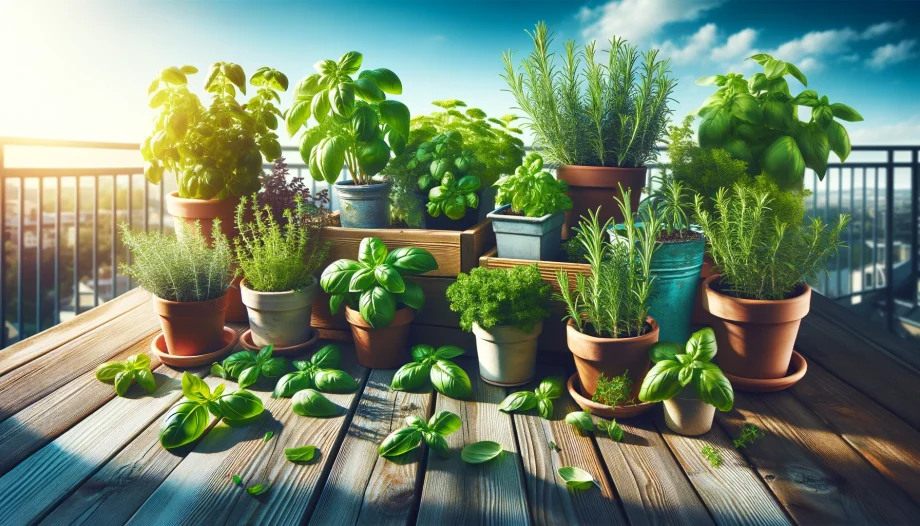This post may contain affiliate links. If you buy something from one of our links we may earn a commission. Thanks
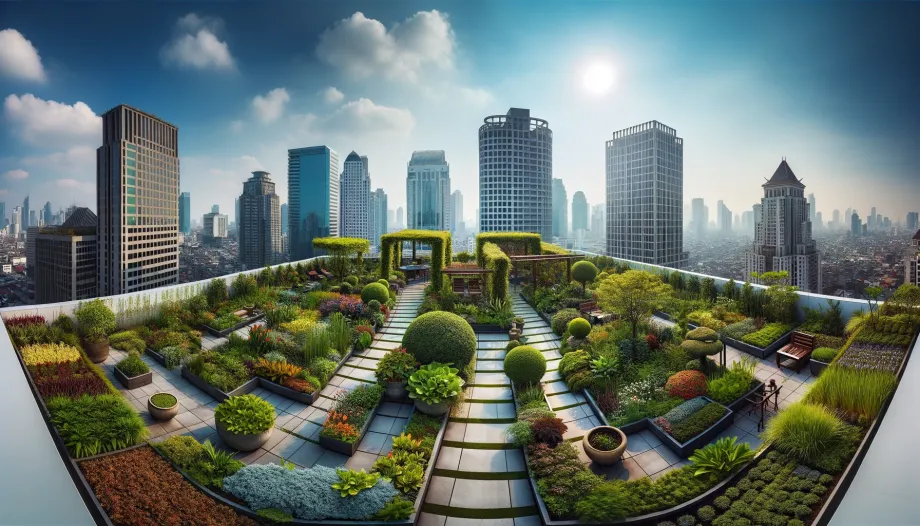
Have you ever asked yourself, ‘What is a rooftop garden?’ Imagine a lush green space, right on top of a city building, where vibrant flowers bloom and fresh veggies grow.
It’s not just a dream; it’s the wonderful reality of rooftop gardens, turning urban skylines into green havens.
Let’s learn more about rooftop gardens in our rooftop garden guide.
What is a Rooftop Garden? Key Takeaways:
- Environmental Benefits:
- Reducing energy costs through natural insulation.
- Improving air quality by filtering pollutants.
- Mitigating the urban heat island effect.
- Mental Health Benefits:
- Providing tranquility and stress relief.
- Fostering relaxation in the midst of urban chaos.
- Cultivating healthier and happier urban communities.
What is a Rooftop Garden?
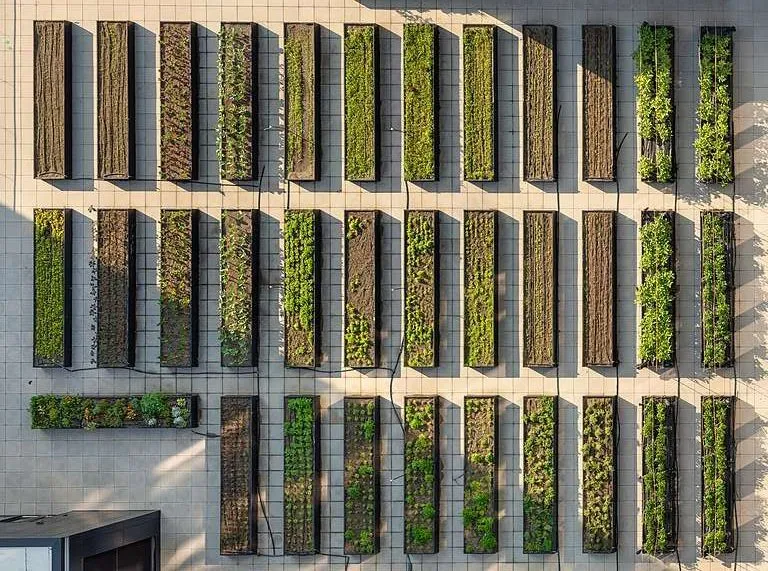
A rooftop garden is a type of garden created on the roof of a building.
These gardens are an innovative way to utilize urban space for greenery, and they offer a range of environmental, social, and economic benefits.
Rooftop gardens can vary in size and complexity, from simple container gardens to extensive landscapes with a variety of plants, and sometimes even water features and seating areas.
They are particularly valuable in cities where ground-level gardening space is limited.
Rooftop gardens help in improving air quality, reducing the urban heat island effect, providing habitats for wildlife, and offering a tranquil space for relaxation and community activities.
A roof garden is a garden on the roof of a building. Besides the decorative benefit, roof plantings may provide food, temperature control, hydrological benefits, architectural enhancement, habitats or corridors for wildlife, recreational opportunities, and in large scale it may even have ecological benefits. The practice of cultivating food on the rooftop of buildings is sometimes referred to as rooftop farming. Rooftop farming is usually done using green roof, hydroponics, aeroponics or air-dynaponics systems or container gardens. Wikipedia
Introduction to Rooftop Gardens
Rooftop gardens, an urban oasis, are transforming cityscapes worldwide. In bustling metropolises like New York City, Los Angeles, Miami, and Chicago, these green havens offer a serene escape from the concrete jungle.
Rooftop gardens are more than just aesthetic upgrades; they’re vital green spaces in densely populated areas where traditional gardens are scarce.
These innovative gardens bring nature to the urban skyline, turning unused roof spaces into vibrant, living ecosystems.
Whether for growing vegetables or creating a peaceful retreat, rooftop gardens redefine urban living, proving that even in the most developed areas, nature can find a way to thrive.
Benefits of Roof Gardens
Rooftop gardens are a beacon of sustainability and wellness in urban environments.
They offer significant benefits, such as reducing energy costs by providing natural insulation, improving air quality by filtering pollutants and mitigating the urban heat island effect.
Well Being Benefits
Beyond their environmental impact, these gardens are sanctuaries for mental well-being.
They offer a unique blend of tranquility and beauty, fostering relaxation and stress relief amidst the hustle and bustle of city life.
In essence, rooftop gardens are not just about growing plants; they’re about cultivating healthier, happier urban communities.
- Urban Green Spaces: Rooftop gardens bring nature to urban skylines, offering a serene escape in cities like New York City, Los Angeles, Miami, and Chicago.
- Versatility and Purpose: These gardens serve multiple purposes, from growing vegetables to creating peaceful retreats, showcasing nature’s resilience in urban settings.
Understanding Rooftop Gardens
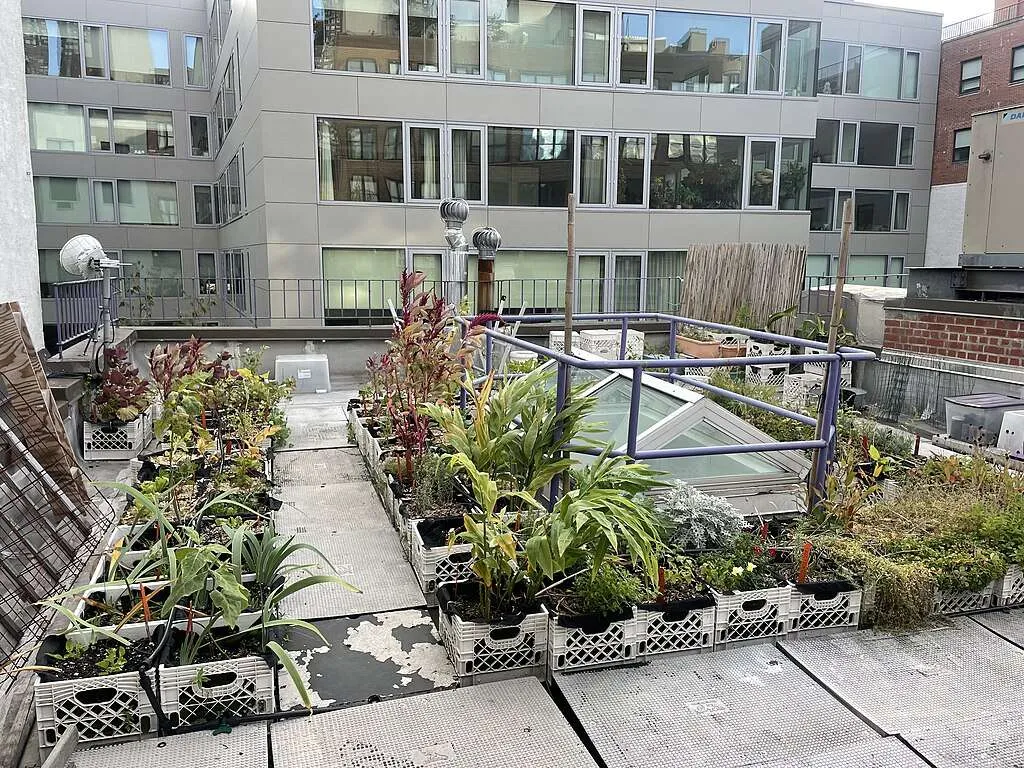
The Growing Popularity of Rooftop Gardens
Rooftop gardens are transforming urban environments into greener, more livable spaces.
In cities where ground-level gardening is limited, these gardens offer an elevated oasis, blending aesthetics with practicality.
They not only beautify urban skylines but also bring nature closer to those living amidst concrete and steel.
- Urban Trend: Cities around the world are embracing rooftop gardens. These spaces utilize otherwise unused areas, turning them into productive and beautiful green spaces.
- Aesthetic and Environmental Impact: Beyond their visual appeal, rooftop gardens contribute to environmental sustainability. They provide green cover, helping to improve air quality and reduce the urban heat island effect, making cities more habitable and eco-friendly.
Benefits of Rooftop Gardens
Rooftop gardens are far more than urban decorations; they’re pivotal in creating sustainable city landscapes.
These gardens offer ecological advantages and contribute significantly to urban agriculture, showcasing a model for future city planning.
- Environmental Advantages: These gardens help reduce stormwater runoff, thereby lessening the burden on urban drainage systems. They also act as natural insulators, lowering energy costs by keeping buildings cooler in summer and warmer in winter.
- Urban Agriculture: Rooftop gardens provide opportunities for city dwellers to engage in urban agriculture, growing fresh produce that reduces the need for transportation, further cutting down on carbon emissions.
Designing Roof Gardens: Unique Challenges
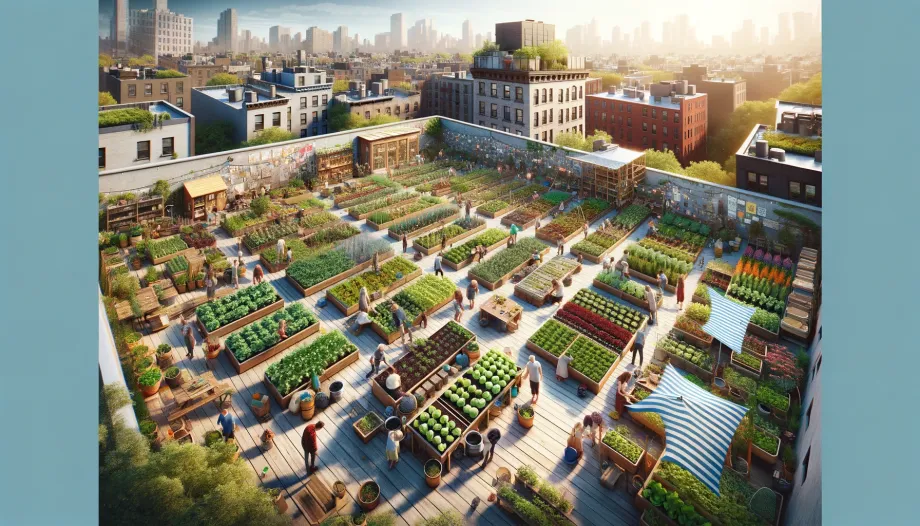
Designing a rooftop garden requires an understanding of the unique environmental conditions found at higher elevations.
These spaces face more extreme weather elements, necessitating specific design considerations.
- Climate Considerations: Rooftop gardens experience more wind and sun exposure compared to ground-level gardens. This requires the selection of plants that can withstand these harsh conditions and the use of materials that are durable yet lightweight.
- Material Selection: It’s essential to avoid regular garden soil, which is too heavy for rooftop applications. Instead, a lightweight, soilless mix is recommended. Additionally, incorporating windbreaks and shade structures can protect plants and make the space more comfortable for users.
Key Considerations Before Starting a Rooftop Garden
Planning a rooftop garden involves several critical steps, beginning with an assessment of the building’s capacity to support additional weight and ensuring safe access to the garden space.
- Structural Assessment: Before starting, it’s crucial to consult a structural engineer or architect to assess whether the roof can support the garden’s weight, especially if planning for larger planters or more extensive greenery.
- Safety and Accessibility: Ensuring safe and easy access to the rooftop garden is essential. This includes secure pathways, proper railings, and possibly weather-resistant outdoor furniture to create a welcoming space.
Design and Layout of Rooftop Gardens
The design and layout of a rooftop garden should optimize the space for both aesthetics and functionality, considering the unique conditions of rooftop environments.
Creating Comfortable Spaces:
Effective design includes creating shaded areas for relaxation and incorporating windbreaks to protect plants and visitors from strong winds.
Privacy can be achieved through strategic plant placement or the use of screening.
Functional Design Elements:
Essential features like electricity for lighting or garden tools, adequate drainage systems to prevent waterlogging and storage for gardening equipment should be integrated into the design.
These elements ensure the garden is not only beautiful but also practical and sustainable.
Creating Shade, Windbreaks, and Privacy:
Strategic placement of taller plants or trellises can provide much-needed shade and wind protection, enhancing the comfort of the space.
Privacy screens, either through plants or architectural elements, can create a secluded retreat amidst the urban landscape.
Incorporating Electricity, Drainage, and Storage:
Installing weatherproof electrical outlets enables the use of gardening tools and outdoor lighting.
Proper drainage systems are crucial to prevent water accumulation and potential damage. Including storage solutions for gardening tools and supplies helps maintain an organized and functional space.
By carefully considering these aspects, a rooftop garden can become a harmonious blend of utility and beauty, transforming an ordinary rooftop into an extraordinary urban oasis.
Creating and Maintaining Your Rooftop Garden
Selecting the Right Plants
Selecting the right plants is a critical step in rooftop gardening. Plants must be resilient to the unique rooftop environment, which often includes extreme sun exposure, high winds, and varying temperature conditions.
The right selection will not only ensure a thriving garden but also reduce maintenance needs.
- Drought-Resistant Plants: Ideal for rooftops that receive ample sunlight. Such plants include succulents, cacti, and other species adapted to dry conditions.
- Shade-Resistant Plants: Perfect for rooftops with limited sunlight. Options include shade-tolerant species like ferns, hostas, and certain flowering plants.
- Sun-Loving Plants: These are ideal for rooftops that bask in full sun for most of the day. Plants such as lavender, salvia, and ornamental grasses, and vegetables like tomatoes and peppers thrive in these conditions, offering both beauty and resilience against the intense sunlight and heat typical of rooftop environments.
Implementing Your Garden Design
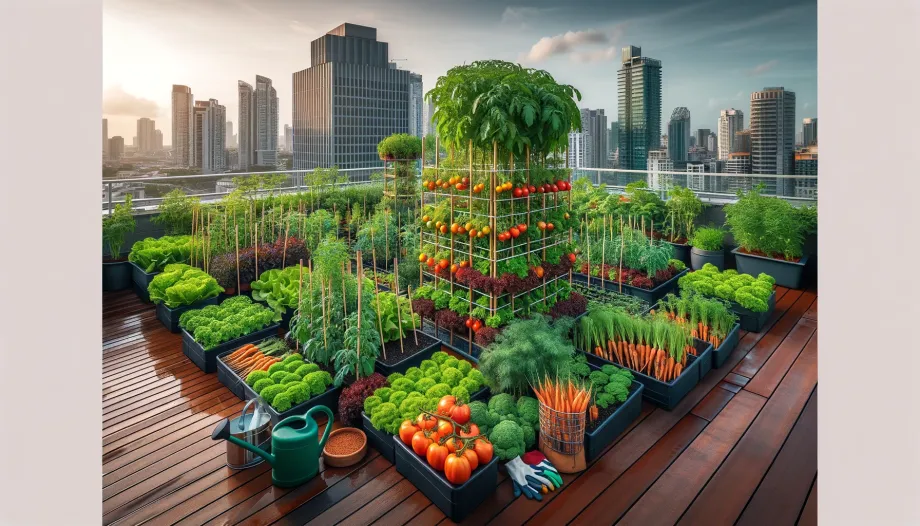
Implementing your rooftop garden design involves careful planning and consideration of the unique challenges posed by rooftop environments.
This phase is crucial for turning your vision into a functional and beautiful green space.
- Layout and Plant Placement: Plan the layout considering factors like sunlight exposure, wind direction, and aesthetics.
- Installation of Essential Elements: Securely install all elements, including planters, seating, and decorative features, ensuring they are weather-resistant and safe.
Maintaining Your Rooftop Garden
Maintaining a rooftop garden involves regular care and attention to ensure its health and longevity.
Proper maintenance is key to a vibrant and flourishing garden.
- Watering and Feeding: Develop a regular watering routine, and consider automated systems for efficiency. Use appropriate fertilizers to nourish your plants.
- Pest and Disease Management: Regularly check for and address any signs of pests or diseases, using environmentally friendly methods wherever possible.
Rooftop Garden Design Inspirations
Rooftop gardens offer a canvas for creative and innovative design ideas. Whether you aim for a lush green retreat, a functional vegetable garden, or a modern minimalist space, there are endless possibilities to explore.
Here are some inspirations to spark your imagination:
- Lush Green Oasis: Transform your rooftop into a green paradise with a mix of grasses, shrubs, and flowering plants. Adding elements like small trees or bamboo can create a sense of seclusion and tranquility.
- Edible Garden: Design a space dedicated to growing vegetables and herbs. Utilize raised beds and container gardening to create a practical yet aesthetically pleasing vegetable garden.
- Modern Minimalist: Embrace a modern look with clean lines and a limited color palette. Use geometric planters and incorporate materials like metal and stone for a sleek, contemporary feel.
- Mediterranean Style: Create a sunny Mediterranean vibe with terracotta pots, olive trees, and drought-tolerant plants like lavender and rosemary.
- Zen Garden: For a peaceful retreat, design a Zen garden with elements like pebbles, bamboo, and a small water feature to promote relaxation and mindfulness.
Each design theme offers a unique way to enjoy and utilize your rooftop space, turning it into a reflection of your personal style and needs.
FAQs About Rooftop Gardens
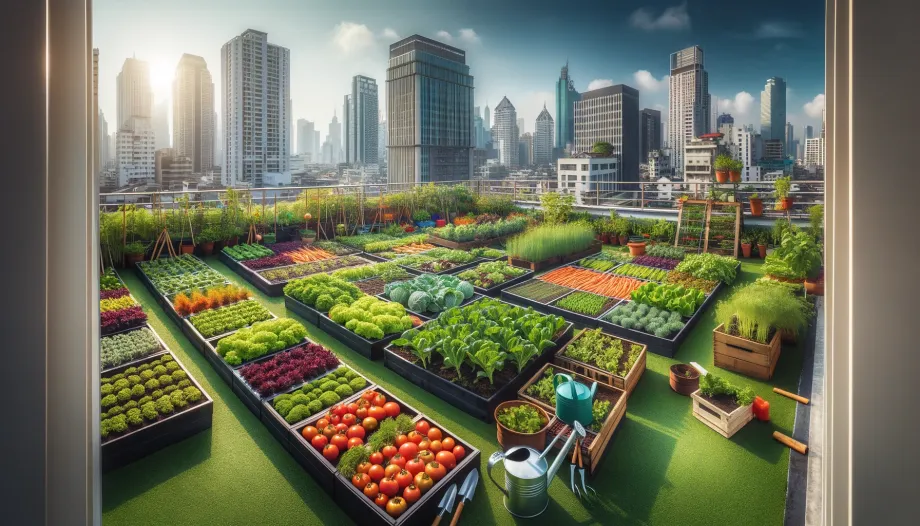
Rooftop gardens are innovative solutions for urban greening and sustainable living.
As more people seek to understand and implement these green spaces, several common questions arise.
Here, we address many of the most frequently asked questions about rooftop gardens, providing insights into their purpose, creation, and maintenance and providing clarity and guidance for those interested in creating and maintaining these green spaces.
Q: What is the purpose of a rooftop garden?
A: Rooftop gardens serve to enhance urban biodiversity, create recreational spaces, improve air quality, and offer opportunities for urban agriculture. They also help mitigate the urban heat island effect.
Q: How do you grow a rooftop garden?
A: To grow a rooftop garden, start by assessing the roof’s structural capacity. Choose plants that suit the rooftop’s microclimate, ensure proper drainage and soil quality, and establish a regular maintenance routine for watering and care.
Q: Why did people start rooftop gardening?
A: Rooftop gardening started as a solution to the lack of green spaces in urban areas. It utilizes unused rooftop spaces to create gardens that provide environmental, social, and aesthetic benefits in densely populated areas.
Q: What do you call a roof garden?
A: A roof garden, also known as a green roof or rooftop garden, is a vegetative space created on the roof of a building, designed for various purposes like recreation, food cultivation, and environmental benefits.
Q: How long do roof gardens last?
A: With proper maintenance, roof gardens can last as long as the buildings they are on. The longevity depends on the quality of materials used, the design, and regular upkeep.
Q: What are the critical elements of a rooftop garden?
A: Critical elements include a strong and waterproof roof, proper drainage, lightweight soil, suitable plants, and safe access. Irrigation and wind protection are also important.
Q: Are rooftop gardens a good idea?
A: Yes, rooftop gardens are beneficial for urban environments. They provide green space, reduce heat island effects, improve air quality, and can offer spaces for relaxation and food production.
Q: What are the different types of rooftop gardens?
A: Types include extensive (low maintenance, shallow soil), intensive (more depth, greater variety of plants), and container gardens (using pots and planters).
Q: How deep should soil be in a roof garden?
A: Soil depth depends on the type of garden; extensive roofs typically have 3-6 inches of soil, while intensive roofs can have 12 inches or more.
Q: What kind of soil do you use for a rooftop garden?
A: Lightweight, well-draining soil mixes, often referred to as soilless media, are ideal for rooftop gardens to avoid excess weight.
Q: What is the best potting mix for a roof garden?
A: The best potting mix is a lightweight, well-draining blend, often made of peat or coco coir, perlite, and vermiculite, tailored to the specific needs of the plants being grown.
Q: How much does soil weigh for a roof garden?
A: The weight varies; lightweight soil mixes can weigh around 10-15 pounds per cubic foot when dry.
Q: What are some techniques that can be used for rooftop gardening?
A: Techniques include container gardening, raised beds, vertical gardens, hydroponics, and using drought-tolerant or native plants suitable for the specific rooftop environment.
Q: What is the difference between raised bed soil and topsoil?
A: Raised bed soil is a specially formulated mix ideal for container or raised bed gardening such as coco coir and perlite or a potting soil mix.
Q: What material is used for rooftop gardening?
A: Materials include lightweight soil mixes, drainage layers like gravel or sand, water retention mats, root barriers, and weather-resistant containers or raised beds.
Q: How thick is an intensive roof garden?
A: Intensive roof gardens typically have a soil depth of 8 to 24 inches, allowing for a wider variety of plants, including small trees and shrubs.
Q: What plants grow well on rooftops?
A: Plants that tolerate wind, sun, and possible drought conditions are ideal, such as sedums, ornamental grasses, herbs, and certain perennials.
Q: Can I put a raised bed on my roof?
A: Yes, but ensure the roof can support the weight, including the soil when wet, plants, and any additional structures.
Q: How to decorate a roof garden?
A: Decorate with weather-resistant furniture, planters, lighting, and art pieces that complement the garden’s theme and layout.
Q: What should you not put in a raised bed?
A: Avoid invasive plants, non-native species that might spread, and plants that require conditions not suitable for a rooftop environment.
Q: Are roof gardens safe?
A: Yes, when designed and maintained properly with attention to structural integrity and safety features like railings.
Q: Why are rooftop gardens so expensive?
A: The cost is due to factors like the need for structural assessments, quality materials resistant to weather and UV exposure, and the logistics of setting up a garden in an elevated location.
What is a Rooftop Garden Conclusion
Rooftop gardens represent a significant shift in urban design and lifestyle. As cities continue to grow, these green spaces offer a crucial balance between urbanization and nature.
They are not just aesthetically pleasing additions to buildings but are pivotal for sustainable and eco-friendly urban living.
- A Green Future: Rooftop gardens symbolize hope for a greener, more sustainable future in urban areas. They demonstrate how innovative solutions can address environmental challenges in cities.
- Enhancing Urban Life: These gardens improve the quality of life in cities by providing residents with access to green spaces, fresh produce, and tranquil environments.
- A Call to Action: The growing interest in rooftop gardens should inspire individuals, communities, and policymakers to invest in these green spaces, recognizing their value in urban ecosystems.
As urban areas evolve, rooftop gardens will undoubtedly play an increasingly important role in shaping sustainable, resilient, and enjoyable living spaces.
Visit my Amazon Influencer Page for videos and gardening products Grow Your Own Garden






